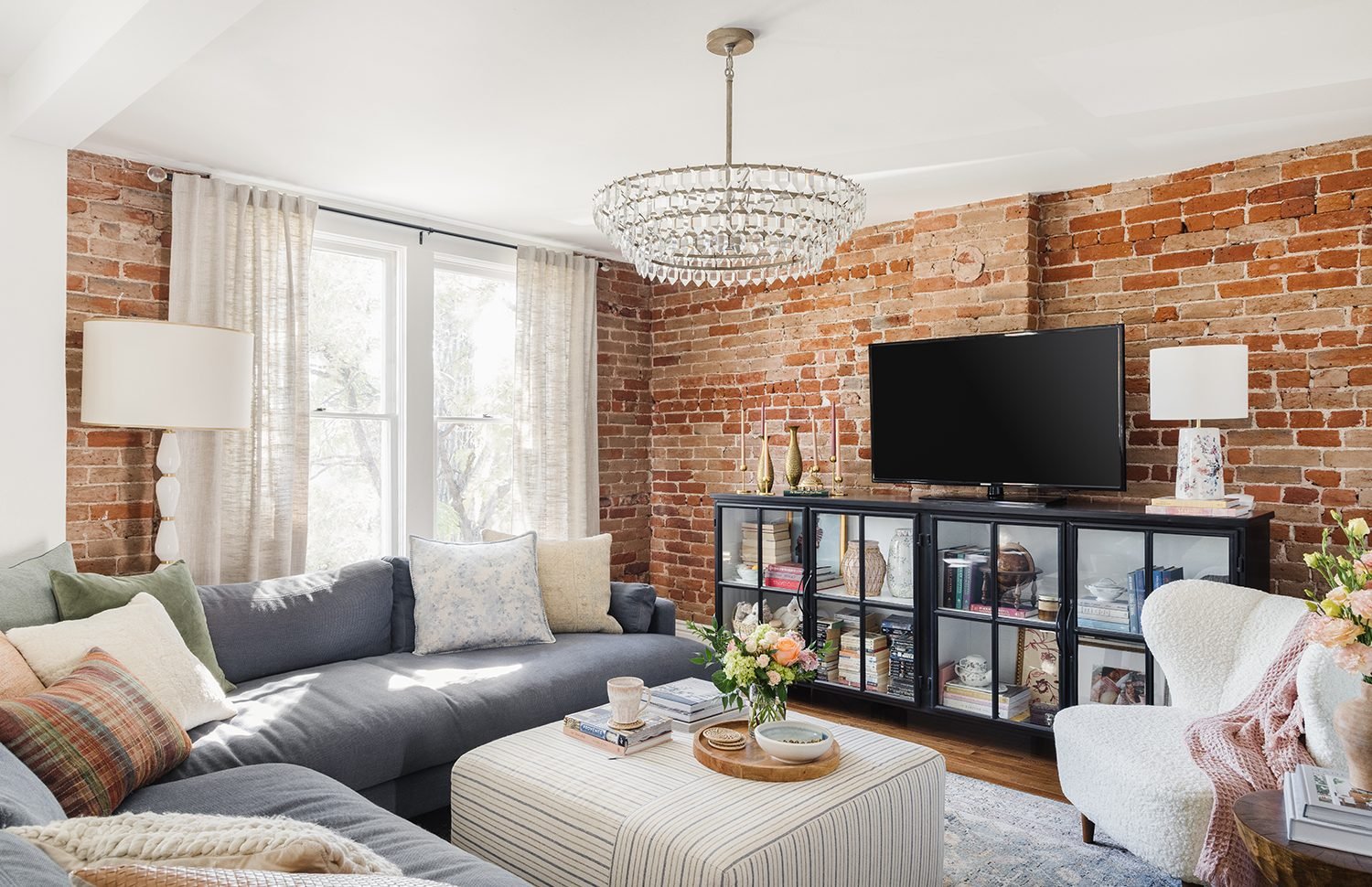

Articles
How High To Hang Chandelier In Living Room
Modified: September 2, 2024
Find out the perfect height to hang a chandelier in your living room with our informative articles. Make a statement with expert advice and create the perfect ambiance for your space.
(Many of the links in this article redirect to a specific reviewed product. Your purchase of these products through affiliate links helps to generate commission for Storables.com, at no extra cost. Learn more)
Introduction
Choosing the right height to hang a chandelier in your living room can greatly impact the overall aesthetic and functionality of the space. A chandelier is not only a source of light, but also a decorative element that adds elegance and character to the room. The proper placement of a chandelier can enhance the ambiance, create a focal point, and elevate the style of your living room.
However, determining the ideal hanging height for your chandelier can be a bit tricky. There are several factors to consider, such as ceiling height, room size, furniture placement, lighting intensity, and design style. Finding the perfect balance between these factors will ensure that your chandelier complements the room’s proportions and creates a harmonious visual appeal.
In this article, we will explore the various factors you should consider when deciding how high to hang a chandelier in your living room. We will also provide guidelines for different types of ceilings and offer some useful tips and recommendations to help you achieve the desired look and atmosphere.
Key Takeaways:
- The height at which you hang a chandelier in your living room can greatly impact the overall aesthetic and functionality of the space. Consider factors such as ceiling height, room size, furniture placement, lighting intensity, and design style to achieve the perfect hanging height for your chandelier.
- When hanging a chandelier, remember to measure and plan, consider weight and support, use a dimmer switch, take maintenance into account, seek professional guidance if needed, ensure proper illumination, coordinate with other light fixtures, and prioritize regular maintenance to keep your chandelier looking its best.
Read more: How High To Hang TV In Living Room
Factors to Consider
When determining how high to hang a chandelier in your living room, there are several key factors that you should take into account. Consider the following factors before making a decision:
- Ceiling Height: The height of your ceiling plays a crucial role in determining the appropriate hanging height for your chandelier. A higher ceiling typically allows for a larger and more dramatic chandelier, while a lower ceiling may require a smaller and more compact fixture.
- Room Size: The size of your living room also influences the hanging height of your chandelier. In a larger room, you may need to hang the chandelier a bit lower to create a focal point and provide adequate lighting. In a smaller room, a higher placement can help maximize space and prevent the chandelier from overpowering the area.
- Furniture Placement: Consider the layout and arrangement of your furniture when determining the height of your chandelier. It should be positioned in a way that complements the furniture below it, without obstructing the view or causing any inconvenience to those seated beneath it.
- Lighting Intensity: The purpose of the chandelier is not only to add visual appeal but also to provide sufficient illumination. Ensure that the chandelier is hung at a height that allows the light to spread evenly across the room, avoiding any dark spots or glare.
- Design Style: The style and design of your chandelier should align with the overall aesthetic of your living room. Consider the architectural elements, color palette, and décor style of the room to ensure that the chandelier complements the space and enhances its visual appeal.
By carefully considering these factors, you can make an informed decision regarding the hanging height of your chandelier. Keep in mind that it’s always a good idea to experiment with different heights and seek professional guidance if needed to achieve the desired effect in your living room.
Ceiling Height
The height of your ceiling is a crucial factor to consider when determining how high to hang a chandelier in your living room. Different ceiling heights will require different hanging heights to achieve the desired aesthetic and functionality. Let’s explore the guidelines for different types of ceiling heights:
- Traditional Ceiling Height: If your living room has a standard 8 to 9-foot ceiling height, the chandelier should typically be hung around 30 to 34 inches above the dining table or seating area. This height provides enough clearance for people to move comfortably beneath the chandelier without feeling crowded.
- High Ceiling: For rooms with high ceilings ranging from 10 to 12 feet or more, you have the opportunity to install a more dramatic and larger-sized chandelier. In this case, consider hanging the chandelier around 36 to 40 inches above the dining table or seating area. This higher placement allows for a grand and eye-catching display, and the chandelier becomes a prominent focal point in the room.
- Low Ceiling: In rooms with lower ceilings, such as those reaching 7 to 8 feet, it is important to choose a chandelier with a more compact size. The chandelier should be hung closer to the ceiling, typically around 24 to 28 inches above the dining table or seating area. This prevents the chandelier from overwhelming the space and ensures that it fits proportionally within the room.
- Vaulted Ceiling: If your living room has a vaulted ceiling, it offers a unique architectural feature that can enhance the overall look of the chandelier. In this case, it is recommended to hang the chandelier at a midpoint between the highest point of the ceiling and the dining table or seating area. This creates a visually balanced composition and allows the chandelier to shine as a central design element in the room.
Remember, these are general guidelines for ceiling heights, and you can always adapt them to suit your specific preferences and room layout. It is important to strike a balance between the chandelier’s size, hanging height, and the overall proportions of the living room to achieve a visually pleasing and functional result.
Room Size
The size of your living room is another crucial factor to consider when determining how high to hang a chandelier. The goal is to create a visually balanced and proportionate arrangement that complements the room’s dimensions. Here are some guidelines to help you determine the ideal hanging height based on room size:
- Larger Room: In a spacious living room, you may have more flexibility in terms of chandelier size and hanging height. To create a focal point and maintain a harmonious proportion, consider hanging the chandelier lower, around 30 to 36 inches above the dining table or seating area. This lower placement adds visual weight and presence, making a statement in the room.
- Smaller Room: In a smaller living room, it’s important to be mindful of the chandelier’s size and hanging height to avoid overwhelming the space. To maximize the room’s visual space, consider hanging the chandelier higher, around 24 to 30 inches above the dining table or seating area. This higher placement creates an illusion of openness and prevents the chandelier from dominating the room.
Keep in mind the scale and proportion of the chandelier in relation to the room size. A large chandelier in a small room can make the space feel cramped, while a small chandelier in a large room may appear insignificant. It’s also essential to consider the height and size of the furniture below the chandelier to maintain balance and avoid any visual interference.
Remember that these guidelines are not set in stone and can be adjusted to your personal preferences and room layout. Experimenting and visually assessing the placement with your specific living room size will help you find the perfect height that enhances the overall aesthetics and functionality of the space.
Furniture Placement
When determining the height at which to hang a chandelier in your living room, it is important to consider the placement of your furniture. The chandelier should be positioned in a way that complements the furniture below it and enhances the overall harmony of the space. Here are some tips to keep in mind:
- Above the Dining Table: If you are hanging a chandelier above the dining table, the recommended height is typically 30 to 34 inches above the table surface. This allows for sufficient clearance and ensures that the chandelier becomes a focal point of the dining area without obstructing the view of those seated. The size of the table and the chandelier should also be considered to maintain visual balance.
- Above a Seating Area: If you are hanging a chandelier above a seating area, such as a coffee table or a conversation area, the height may vary depending on the seating arrangements and the chandelier’s size. Typically, a height of 6 to 8 feet from the floor is recommended to ensure that the chandelier is within easy reach and does not hinder visibility or conversation.
- Avoid Obstructions: Ensure that the chandelier does not obstruct any pathways or obstruct the view in the living room. Consider the height of the tallest person in the room to ensure that there is enough clearance for them to move comfortably beneath the chandelier.
- Proportional Alignment: The chandelier should be aligned with the furniture below it, creating a proportional and visually pleasing arrangement. Center the chandelier with the dining table or seating area to maintain balance and symmetry in the room.
By considering the placement of your furniture, you can determine the ideal height to hang your chandelier and create a cohesive and inviting living room space. Remember to take into account the size and scale of both the furniture and the chandelier to achieve a harmonious visual balance.
Lighting Intensity
When deciding how high to hang a chandelier in your living room, it is important to consider the lighting intensity and the desired effect you want to achieve. Here are some factors to keep in mind:
- Spread of Light: The height of the chandelier will affect how the light is dispersed in the room. Consider the beam angle and the number of bulbs or light sources in the chandelier. Hanging the chandelier too high may result in a more diffused and less focused light, while hanging it too low may create a concentrated pool of light. Aim for a height that allows the light to spread evenly across the room, providing sufficient illumination without causing glare or dark spots.
- Ambient Lighting: Chandeliers are often used as a primary light source in a living room. Consider the overall lighting scheme of the room and how the chandelier will contribute to the ambient lighting. If your living room has additional light fixtures, such as recessed lights or wall sconces, ensure that the chandelier coordinates with the existing lighting and complements the overall ambiance of the room.
- Dimmer Switch: Installing a dimmer switch for your chandelier allows you to adjust the lighting intensity based on your needs and mood. This feature is especially useful for creating a more relaxed and intimate atmosphere during gatherings or when watching movies. Ensure that the chandelier is hung at a height that allows easy access to the dimmer switch for convenient control of the lighting intensity.
Taking the lighting intensity into consideration will help you determine the ideal height to hang your chandelier for optimal illumination and ambiance in your living room. Experiment with different heights and explore the capabilities of your chandelier’s lighting design to achieve the desired effect.
Design Style
The design style of your living room is a significant factor to consider when determining how high to hang a chandelier. The chandelier should complement the overall aesthetic of the room and enhance its style. Here are some design styles and their corresponding considerations:
- Classic and Traditional: In a classic or traditional living room, a chandelier can serve as a striking focal point. Consider hanging the chandelier at a lower height to showcase its grandeur and elegance. The chandelier should coordinate with other traditional elements in the room, such as antique furniture or ornate architectural details, to create a cohesive and sophisticated look.
- Modern and Contemporary: For a modern or contemporary living room, a chandelier can add a touch of luxury and create visual interest. Opt for a sleek and minimalist chandelier design, and consider hanging it at a higher height to maintain an open and airy feel in the room. The chandelier should complement the clean lines and simplicity of the modern design style.
- Eclectic and Bohemian: In an eclectic or bohemian living room, there are no hard rules when it comes to chandelier placement. Embrace creativity and mix different styles and materials. You can hang the chandelier at a varying height, depending on the overall aesthetic you want to achieve. Consider incorporating mismatched or vintage chandeliers to add personality and character to the space.
- Transitional and Contemporary: A transitional or contemporary living room blends elements from both traditional and modern styles. In this case, aim for a balanced placement of the chandelier. Consider hanging it at a medium height to create a sense of harmony and blend the different design elements seamlessly.
By aligning the height and placement of the chandelier with the design style of your living room, you can enhance the overall visual appeal and create a cohesive and stylish space that reflects your personal taste.
The general rule of thumb is to hang a chandelier approximately 30-36 inches above the dining table or 7 feet above the floor in a living room to ensure proper lighting and visual balance in the space.
Hanging Height Guidelines
When it comes to hanging a chandelier in your living room, there are some general guidelines you can follow to determine the appropriate height. However, keep in mind that these guidelines can vary depending on the specific factors mentioned earlier. Here are some hanging height recommendations based on different ceiling heights:
- Traditional Ceiling Height: For a living room with a standard ceiling height of 8 to 9 feet, hang the chandelier approximately 30 to 34 inches above the dining table or seating area.
- High Ceiling: In rooms with high ceilings ranging from 10 to 12 feet or more, consider hanging the chandelier around 36 to 40 inches above the dining table or seating area.
- Low Ceiling: In rooms with lower ceilings, such as those reaching 7 to 8 feet, hang the chandelier closer to the ceiling, typically around 24 to 28 inches above the dining table or seating area.
- Vaulted Ceiling: For rooms with a vaulted ceiling, hang the chandelier at a midpoint between the highest point of the ceiling and the dining table or seating area to create a visually balanced composition.
It is important to note that these are general guidelines and should be adjusted based on other factors such as room size, furniture placement, lighting intensity, and design style. These recommendations serve as a starting point to help you achieve a balanced and visually appealing chandelier placement in your living room.
As with any design decision, it is always recommended to visually assess the chandelier’s placement and make adjustments based on your personal preferences and the specific requirements of your living room. Experimenting with different heights and seeking professional advice, if needed, can help you achieve the desired look and atmosphere.
Traditional Ceiling Height
For living rooms with a traditional ceiling height of 8 to 9 feet, there are specific guidelines to follow when hanging a chandelier. These guidelines ensure that the chandelier is positioned at the appropriate height to create a visually balanced and functional space.
Typically, for a traditional ceiling height, it is recommended to hang the chandelier approximately 30 to 34 inches above the dining table or seating area. This height allows for sufficient clearance for people to move comfortably beneath the chandelier without feeling crowded. It also provides an optimal balance between the chandelier’s presence in the space and its functional purpose.
When determining the exact height, consider the size and shape of the chandelier. If you have a larger and more elaborate chandelier, it may be better to hang it closer to the lower end of the recommended range to maintain proportion and prevent it from overwhelming the room. Conversely, a smaller chandelier can be hung towards the higher end of the range to add a touch of elegance without overpowering the space.
Another aspect to consider is the size of the dining table or seating area. The chandelier should be centered and proportionate to the furniture below it. If you have a larger table, you may need to adjust the hanging height accordingly to ensure that the chandelier is positioned in the center and provides adequate lighting coverage.
It is important to remember that these guidelines are not rigid rules, but rather a starting point for your chandelier placement. Personal preferences and the specific layout of your living room can also play a role in determining the hanging height. Visually assess the placement and make adjustments as needed to achieve the desired aesthetic and functional outcome.
By following these guidelines and considering factors such as chandelier size, furniture placement, and personal preferences, you can create a beautiful and inviting living room ambiance with a chandelier that exudes traditional elegance.
High Ceiling
Living rooms with high ceilings present an opportunity to make a grand statement with your chandelier. High ceilings, typically ranging from 10 to 12 feet or even higher, allow for the installation of larger chandeliers that can command attention and become a prominent focal point in the space.
When hanging a chandelier in a room with a high ceiling, it is recommended to position it around 36 to 40 inches above the dining table or seating area. This height not only ensures that the chandelier remains within reach for maintenance purposes but also allows it to visually anchor the space and create a sense of grandeur and elegance.
Keep in mind that the actual height may vary depending on the size and design of the chandelier. If the chandelier is particularly vast or features a multi-tiered structure, it may be better to aim for the higher end of the recommended height range. This will help maintain proportion and prevent the chandelier from overwhelming the room.
You may also consider using a chandelier lift or pulley system to lower the chandelier for cleaning, maintenance, or adjustment of lighting elements. This approach allows for easier access to the chandelier while ensuring that it remains within the desired height range when in use.
Furthermore, when dealing with high ceilings, it is important to consider the overall visual composition of the room. High ceilings can create a sense of vertical space, and a well-placed chandelier can help bridge the gap between the lofty ceiling and the rest of the room. Additionally, consider other decorative elements in the space, such as tall furniture or artwork, to create a cohesive and balanced design scheme.
Remember, the key with high ceilings is to choose a chandelier that suits the scale and proportion of the room. By hanging it at the appropriate height and considering the room’s other elements, you can create a captivating and visually stunning living room that showcases the beauty of your high ceiling.
Low Ceiling
Living rooms with low ceilings require careful consideration when selecting and hanging a chandelier. Unlike rooms with higher ceilings, low ceilings, typically ranging from 7 to 8 feet, can present challenges for chandelier placement. However, with the right approach, you can still incorporate a beautiful chandelier that enhances the space without overpowering it.
When dealing with low ceilings, it is important to choose a chandelier with a more compact size and minimalistic design. This will help prevent the chandelier from overwhelming the room and creating a cramped or crowded feel. Consider hanging the chandelier closer to the ceiling, typically around 24 to 28 inches above the dining table or seating area. This height allows for sufficient clearance and visual balance within the space.
When determining the exact height, take into account the size and shape of the chandelier. Smaller and simpler designs work best in rooms with low ceilings as they don’t visually dominate the space. Additionally, consider the size of the furniture below the chandelier to ensure that it fits proportionally without obstructing the view or causing any inconvenience to those seated.
If your low-ceilinged living room has limited vertical space, consider alternative lighting options such as flush-mount or semi-flush-mount fixtures. These types of fixtures sit directly against the ceiling, providing ample illumination without compromising headroom.
Finally, remember that even with a low ceiling, you can still create a stunning lighting arrangement by incorporating other types of lighting fixtures, such as wall sconces or recessed lights. These can provide additional illumination and help balance the overall lighting scheme of the room.
By carefully choosing a chandelier of appropriate size and hanging it at a height that ensures visual balance and clearance, you can add a touch of elegance and style to your living room, even with low ceilings.
Vaulted Ceiling
Vaulted ceilings are architectural features that add a sense of height, spaciousness, and drama to a living room. When it comes to hanging a chandelier in a room with a vaulted ceiling, there are specific considerations to ensure that the chandelier enhances the visual appeal and complements the grandeur of the space.
In rooms with vaulted ceilings, it is recommended to hang the chandelier at a height that creates a visually balanced composition. As a general guideline, position the chandelier at a midpoint between the highest point of the ceiling and the dining table or seating area. This placement allows the chandelier to shine as a central design element and creates a sense of harmony within the room.
The exact height may vary depending on the specific design and dimensions of the vaulted ceiling. Consider the slope and angle of the ceiling when determining the ideal hanging height. Ensure that the chandelier is positioned in a way that highlights the architectural beauty of the vaulted ceiling without being too high or too low.
Another aspect to consider is the size and scale of the chandelier in relation to the overall space. A larger chandelier with multiple tiers can complement the grandeur of the vaulted ceiling and create a captivating focal point. However, be mindful of proportions and avoid choosing a chandelier that is disproportionately large for the room.
Additionally, consider the function of the chandelier in the room. Is it primarily providing ambient lighting, or is it intended to be a statement piece? Depending on the purpose, you can adjust the hanging height and the intensity of the light emitted by the chandelier to achieve the desired effect.
Lastly, remember that vaulted ceilings offer a unique opportunity to showcase the beauty of a chandelier. Consider incorporating other design elements, such as tall drapes or artwork, to complement the chandelier and create a cohesive and visually stunning living room space.
By carefully considering the height, scale, and placement of the chandelier, you can harness the architectural beauty of a vaulted ceiling and create a breathtaking living room that exudes elegance and grandeur.
Tips and Recommendations
When it comes to hanging a chandelier in your living room, here are some tips and recommendations to help you achieve the best results:
- Measure and Plan: Before installing a chandelier, measure the height and dimensions of the room, as well as the furniture placement. This will help you determine the appropriate hanging height and select a chandelier of the right size for your living room.
- Consider Weight and Support: Chandeliers can be heavy, especially those made of crystal or other sturdy materials. Ensure that you have adequate support in the ceiling to safely hang and support the weight of the chandelier. If needed, consult a professional electrician or contractor for assistance.
- Use a Dimmer Switch: Installing a dimmer switch allows you to adjust the lighting intensity of the chandelier based on the occasion or mood. This feature gives you more control over the ambiance of your living room.
- Take Maintenance into Account: Consider the maintenance required for the chandelier, such as cleaning or changing light bulbs. Make sure that the height at which you hang the chandelier allows for easy access for these tasks.
- Seek Professional Guidance: If you are unsure about the optimal hanging height or placement of the chandelier, or if you have a complex ceiling structure, it is recommended to consult a professional interior designer or lighting specialist. They can provide expert advice and help you achieve the desired look and functionality.
- Ensure Proper Illumination: The chandelier should provide sufficient illumination for the living room. Consider the wattage and intensity of the bulbs used and adjust accordingly to achieve the desired lighting effect.
- Coordinate with Other Light Fixtures: If your living room has other light fixtures, such as wall sconces or recessed lights, ensure that the chandelier coordinates with them in terms of style, finish, and overall lighting scheme.
- Regular Maintenance: Keep your chandelier looking its best by regularly dusting and cleaning it. Follow the manufacturer’s instructions for maintenance and consider professional cleaning for larger or more intricate chandeliers.
Remember, the hanging height of the chandelier should not only be visually appealing but also functional and practical. It should provide appropriate clearance, illumination, and create a harmonious composition with the surrounding elements in your living room.
Ultimately, the goal is to create a comfortable and visually pleasing space that highlights the beauty and elegance of your chandelier while enhancing the overall ambiance of your living room.
Conclusion
Choosing the right height to hang a chandelier in your living room is essential for creating a visually appealing and functional space. By considering factors such as ceiling height, room size, furniture placement, lighting intensity, and design style, you can achieve the perfect hanging height for your chandelier.
For traditional ceiling heights, aim to hang the chandelier approximately 30 to 34 inches above the dining table or seating area. In rooms with high ceilings, go for a more dramatic look by hanging the chandelier around 36 to 40 inches above the dining table or seating area. In contrast, rooms with low ceilings require a more compact chandelier hung closer to the ceiling, around 24 to 28 inches above the dining table or seating area. Vaulted ceilings provide an opportunity to create a visually balanced composition by positioning the chandelier at a midpoint between the highest point of the ceiling and the dining table or seating area.
Remember to consider the size and design of the chandelier, coordinate it with the furniture and overall style of the room, and ensure proper lighting intensity. Utilize dimmer switches for added control and seek professional guidance if needed for complex ceiling structures or unsure placements.
By following these guidelines and incorporating the tips and recommendations provided, you can create a stunning living room that showcases your chandelier as a centerpiece. Achieving the perfect hanging height will not only elevate the aesthetics of your space but also enhance the overall ambiance, creating a welcoming and inviting atmosphere for you and your guests.
Take the time to carefully plan and measure before installing your chandelier, ensuring that it is securely supported and properly maintained. By paying attention to these details, you can enjoy the beauty and elegance of your chandelier for years to come.
Frequently Asked Questions about How High To Hang Chandelier In Living Room
Was this page helpful?
At Storables.com, we guarantee accurate and reliable information. Our content, validated by Expert Board Contributors, is crafted following stringent Editorial Policies. We're committed to providing you with well-researched, expert-backed insights for all your informational needs.

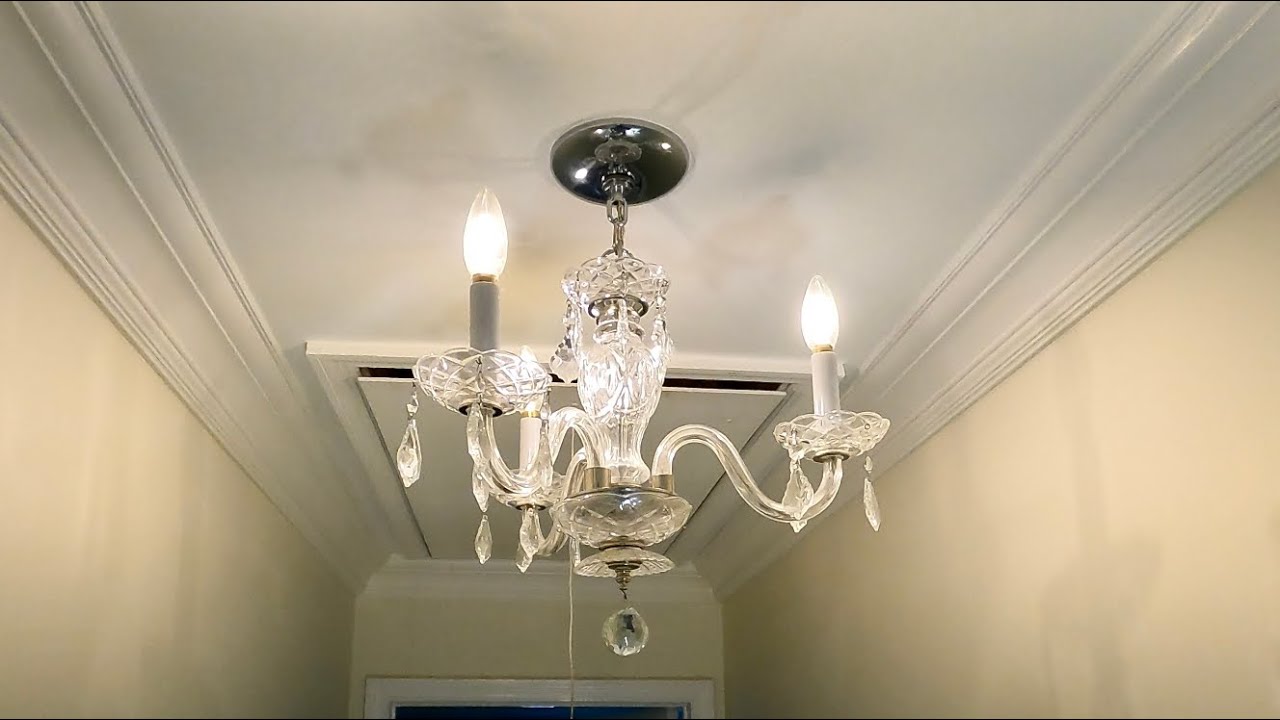

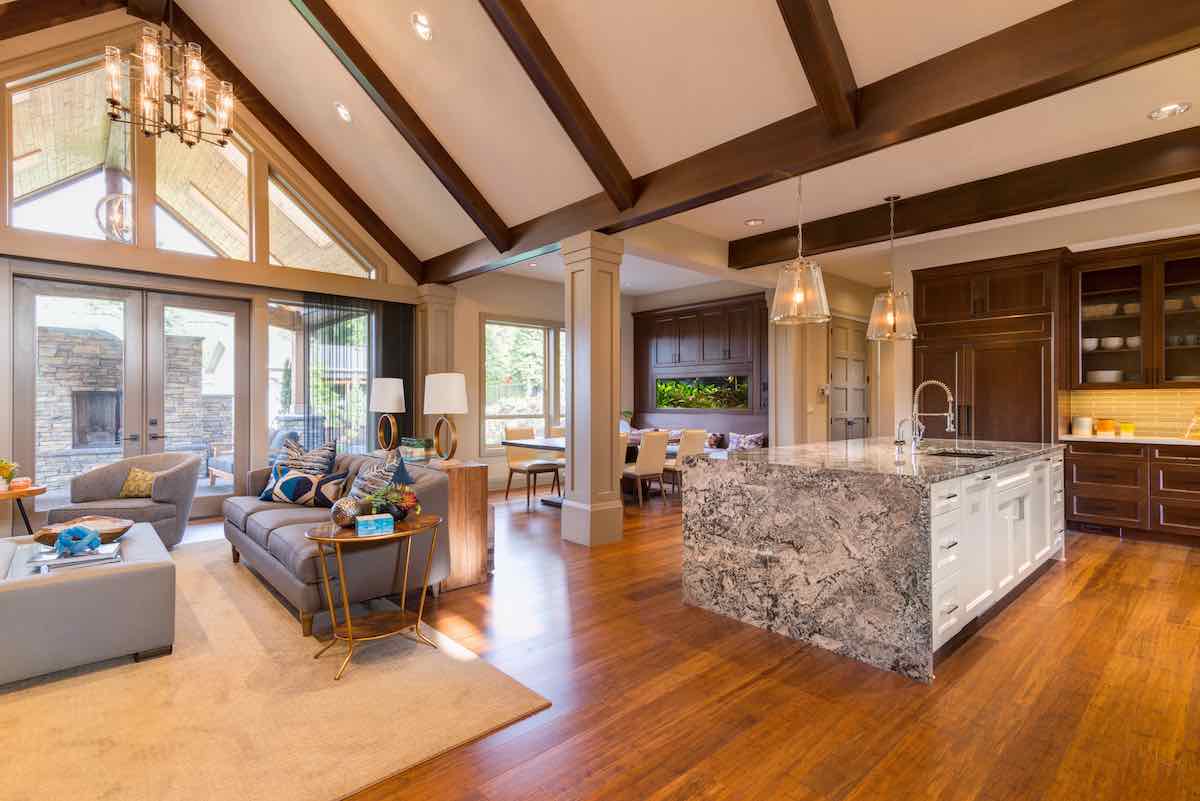


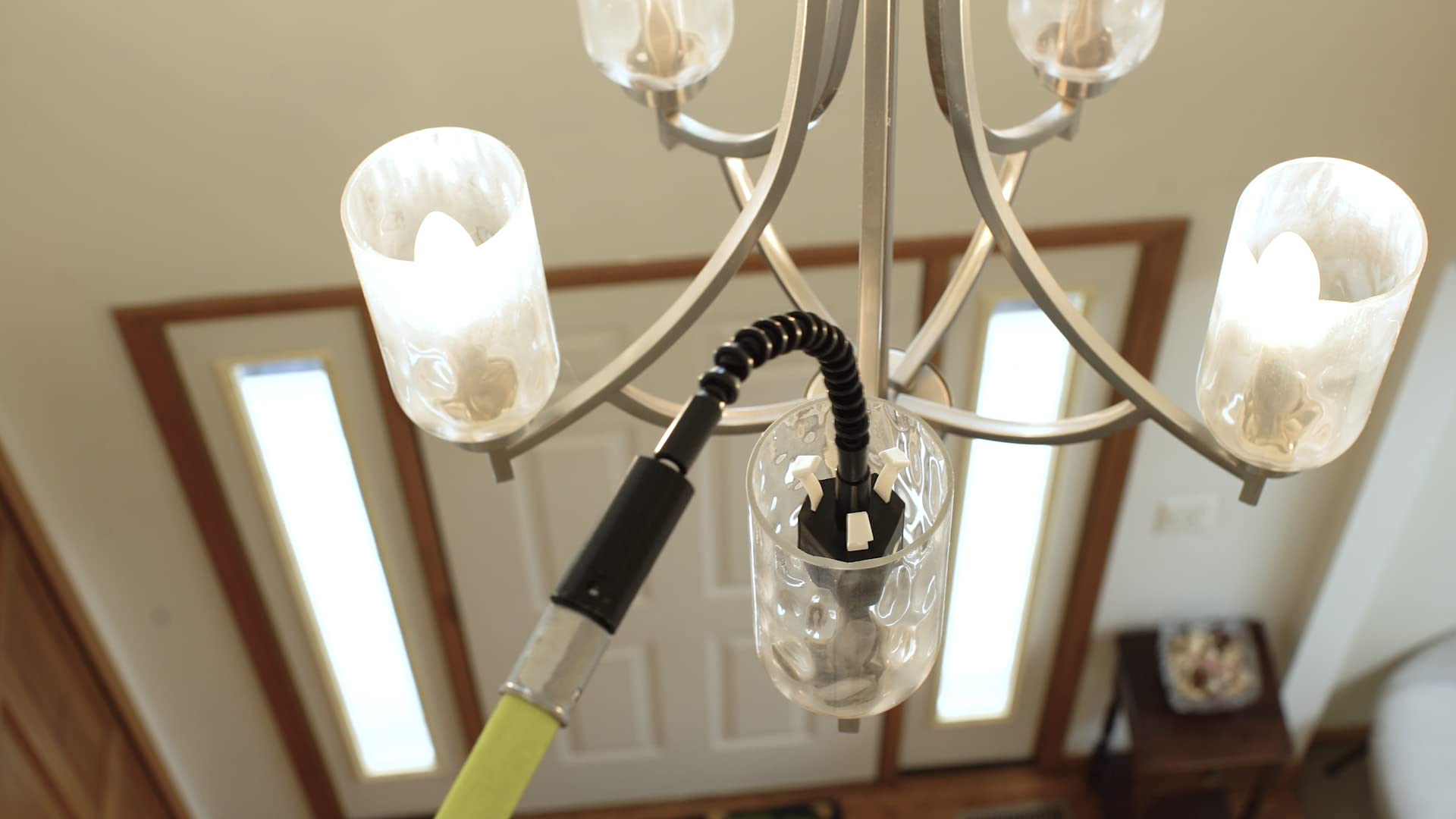
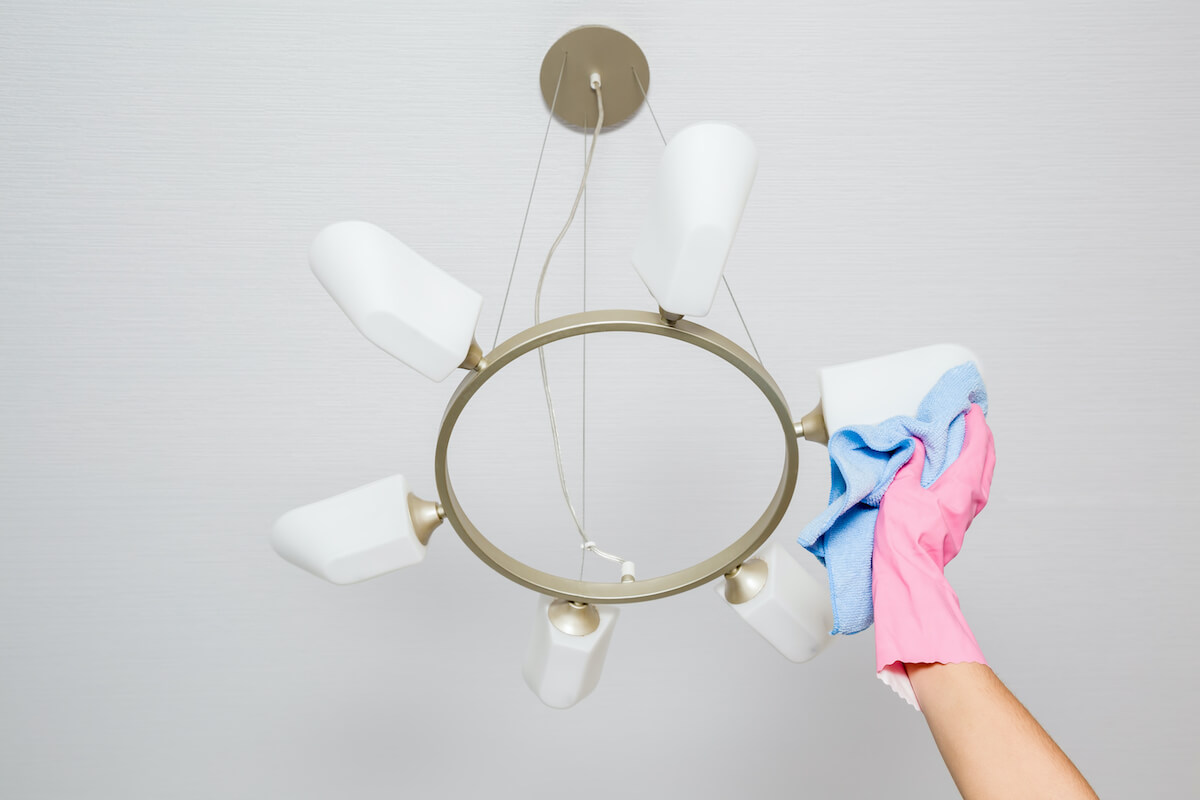


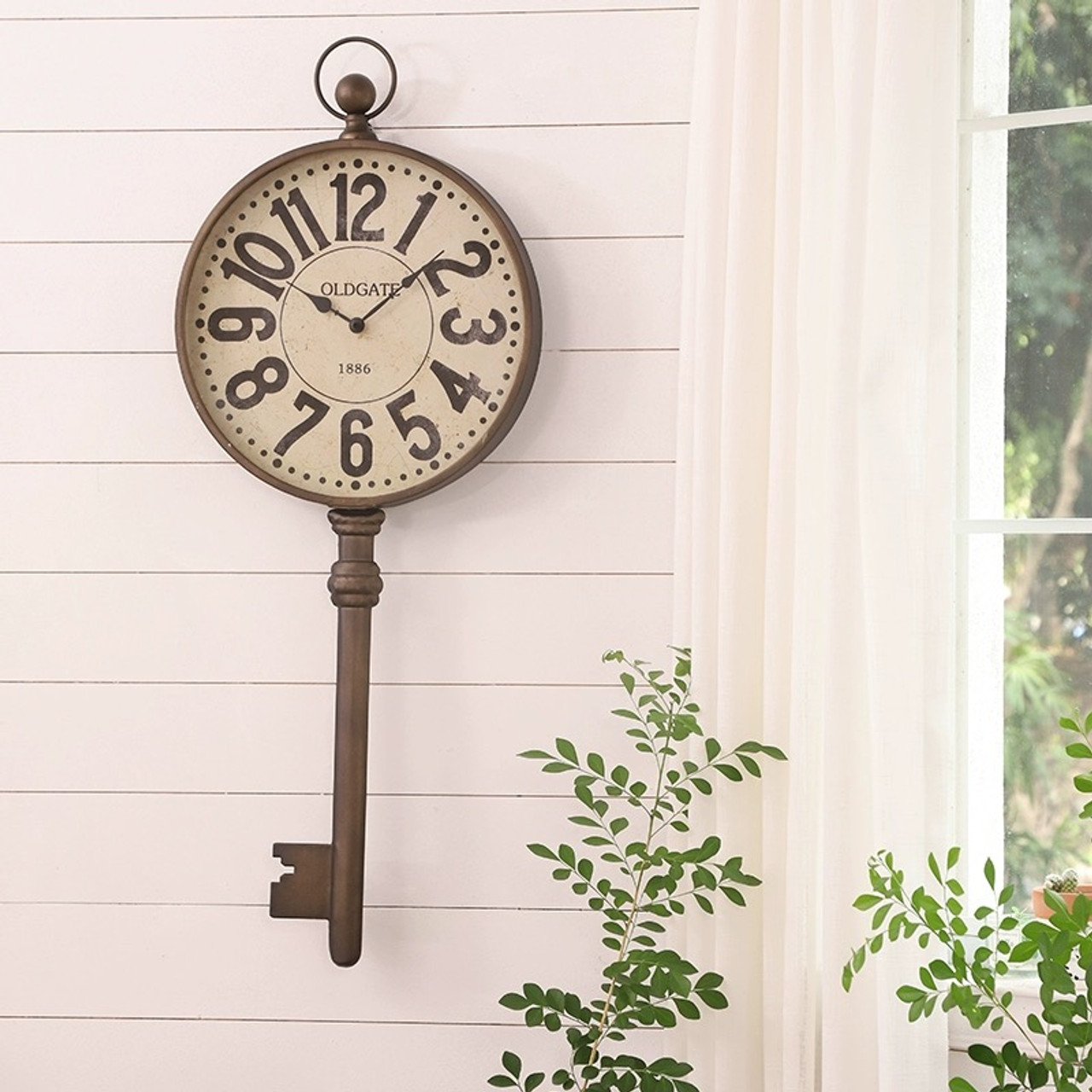


0 thoughts on “How High To Hang Chandelier In Living Room”